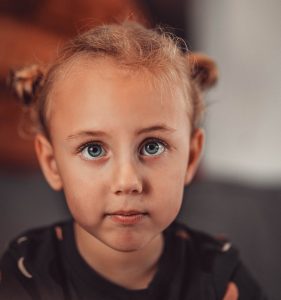 While some students thrived during distance learning in the spring, many others struggled with the format or with other challenges, such as concerns about safety, family finances or health. Whatever form school takes, here are four ways parents and educators can help children cope with change and uncertainty as we face the new school year.
While some students thrived during distance learning in the spring, many others struggled with the format or with other challenges, such as concerns about safety, family finances or health. Whatever form school takes, here are four ways parents and educators can help children cope with change and uncertainty as we face the new school year.
Share family members’ struggles and help kids develop their own narrative. Parents instinctively shield their children from pain, says Bruce Feiler, author of “Life Is in the Transitions,” but that is shortsighted and can hinder a child’s ability to navigate transitions.
Many kids get comfort from hearing family stories. “Tell them stories of people they know who overcame hardships,” Feiler says, to help them understand how those life quakes have affected others.
“Kids like to think life is a fairy tale or superhero story, but the truth is that it’s not the hero who makes the fairy tale; it’s the wolf, the tornado, the pandemic,” he says. “You can’t banish the wolf and you don’t want to, because that’s when the heroes are made. We all have to be the hero of our own story, and this is a hero-making moment.”
Help them understand and manage their emotions. “The air is drenched with this amorphous kind of grief,” and loss can take many different shapes, says psychologist Catherine Steiner-Adair, author of “The Big Disconnect.”
Ambiguous grief is the 7-year-old who wonders, “Why can’t I just go back to school?” Acute grief is the teen whose family member died. Anticipatory grief is the 11-year-old who asks, “Will I have to go back to distance learning in the winter?” Moral outrage grief is the child who feels deep sadness about what is happening in the country and the world. “Most of us are experiencing two or three types, and you can’t move away from such a strong emotion until you can define what you’re grieving,” she says.
Partner with the school to meet kids’ needs. Emotions are contagious, and children take their cues from caregivers, says Jae Lee, principal of Carderock Springs Elementary School in Bethesda, Md. “Reassure them that it will be okay and that staff can’t wait to see them, teach them, play and be together again.”
Monitor school communications as plans evolve, adds Christina Conolly, director of psychological services for Montgomery County Public Schools. “You want to prepare your child for what school will look like, what’s going to happen and how they can get support.”
Think creatively about touch, play and connection. These things are important for children’s social and emotional development, and kids will feel their absence.
Lee worries that the lack of natural communication will confuse children. He likes the idea of clear masks so students can see adults’ expressions, and his staff is committed to finding other ways to infuse warmth when schools can open.
Sallie Permar, professor of pediatrics and immunology at Duke University, advises thinking in terms of levels of risk. “Hugging when both people have a mask on is less risky than if either person is unmasked. A high-elbow is better than a high-five because the elbow hasn’t been as many places,” she said.
Excerpted from “Four ways to help kids cope with the uncertainty of the new school year” in The Washington Post. Read the full article for additional details on each of the recommendations.
The author, Phyllis L. Fagell, is the school counselor at the Sheridan School in Washington, a therapist at the Chrysalis Group in Bethesda and the author of “Middle School Matters.” Follow On Parenting on Facebook for more essays, news and updates, and join the discussion group to talk about parenting and work.